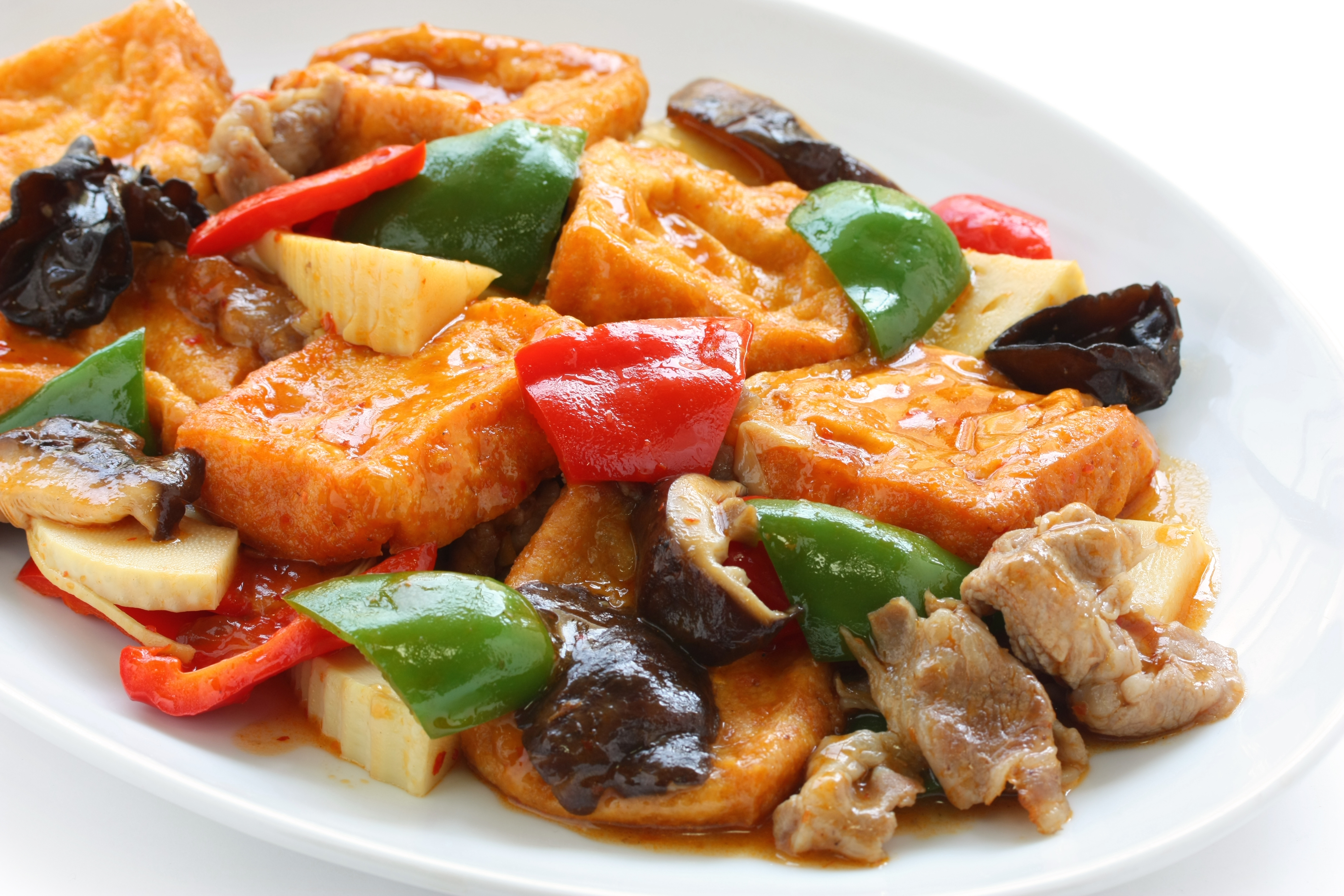
(Get in my belly, home-style tofu--hold on, is that pork I spy? Image: bonchan/Shutterstock.)
Picture this: you’re in a Chinese restaurant, eyeing a tasty-looking tofu dish on the menu, feeling blessed because--finally--you’ve found a place that’s vegetarian-friendly. But wait! When the server brings your food to the table, to your dismay, there’s meat mixed in with your tofu! What’s going on here?
In Western countries like the United States, tofu (豆腐; dòufu) is practically synonymous with a vegetarian or vegan lifestyle, but in China, it’s just another source of protein and is frequently paired with meat. Still, there are over 50 million vegetarians in China today, and the average Chinese person eats far less meat per year than the average American. So what are they eating, and how can you stick to a vegetarian diet while you’re in China?
Vegetarianism in China
Historically, vegetarianism (素食主义; sùshí zhǔyì) in China has been intertwined with the practice of Buddhism. Since living a life that does not harm others and is free from desire is one of Buddhism’s key tenets, many Buddhist traditions recommend a vegetarian diet, and even require it of monks and nuns. According to orthodox standards, being a vegetarian (吃素; chīsù) entails abstaining from not only meat, but also pungent ingredients that “excite the senses” such as onions, garlic, and cilantro.
Poverty was (and is) another major factor limiting the amount of meat Chinese people consume. Meat was once a rare luxury for many people, but as the country grew wealthier, eating meat became a sign of prosperity. Still, there are many people today who can’t afford to eat meat on a regular basis.
Nowadays, Chinese people choose to become vegetarian for a wide variety of reasons that are unrelated to religious practices. Years of food safety scandals have raised questions about the quality of domestically-produced meat in the minds of consumers, and in cities, concerns about obesity and heart health are spurring health-conscious consumers to turn toward plant-based diets. Growing awareness of animal welfare and environmental issues, too, has encouraged diners to give up meat.
How to Find Vegetarian Options in China
While there might not be a dedicated vegetarian section on the menus of most Chinese restaurants, eating well in China while following a meatless diet is easier than you might think. The key is communication. Here are a few phrases you should have in your repertoire:
| 我吃素。 |
| Wǒ chīsù. |
| I am a vegetarian. |
| 我不吃___。(肉、鱼) |
| Wǒ bù chī___ (ròu, yú). |
| Wǒ bù chī___ (ròu, yú). |
Ask the Waitstaff
If you aren’t sure whether a dish contains meat or not, don’t be afraid to ask your server.
|
这个菜里有肉吗? Zhè ge cài li yǒu ròu ma? Does this dish have meat in it? |
Many tofu and vegetable dishes contain a little bit of meat for flavoring. If your stomach is growling for a particular dish, you can always ask if it can be prepared without meat.
|
可以不放肉吗? Kěyǐ bú fàng ròu ma? Is it possible to leave out the meat? |
Your server will let you know if it’s possible or not. Of course, it isn’t feasible to leave out the meat in every dish--after all, what’s a 肉夹馍 (ròujiāmó) without 肉?
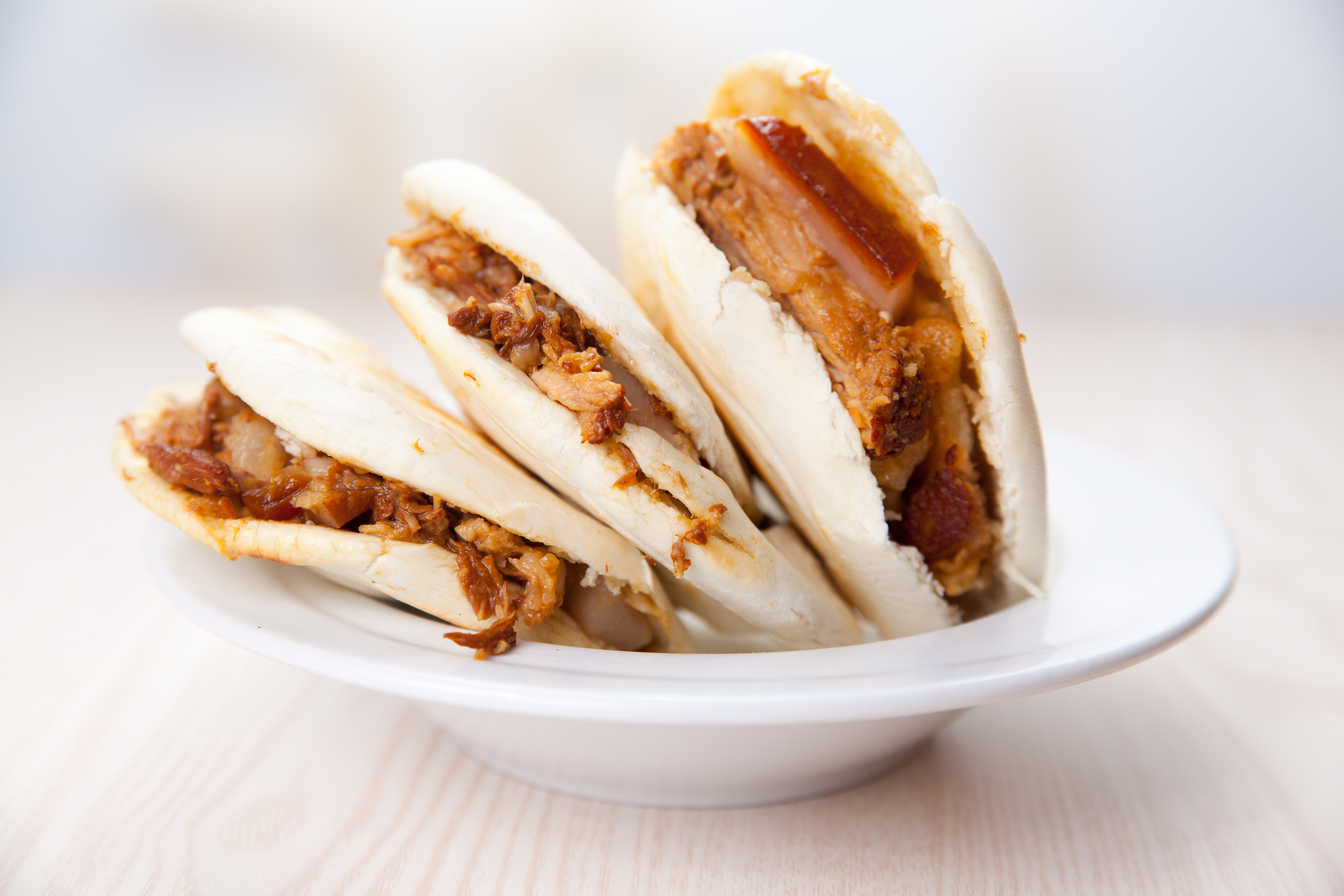
(肉夹馍, or pork flatbread sandwiches, are delicious, but decidedly not vegetarian-friendly. Image: L.F./Shutterstock)
Sometimes vegetarianism isn’t well understood in China, so you might feel the need to make it very clear to your server that there cannot be meat in your dish.
|
请问,你确定这个菜没有肉吗?我不吃肉。 Qǐng wèn, nǐ quèdìng zhè ge cài méi yǒu ròu ma? Wǒ bù chī ròu. Excuse me, are you sure there’s no meat in this dish? I don’t eat meat. |
If you don’t feel confident in your Chinese yet, bring a friend along to help you out. Chinese food is better when shared, anyway!
Find the Nearest Buddhist Temple
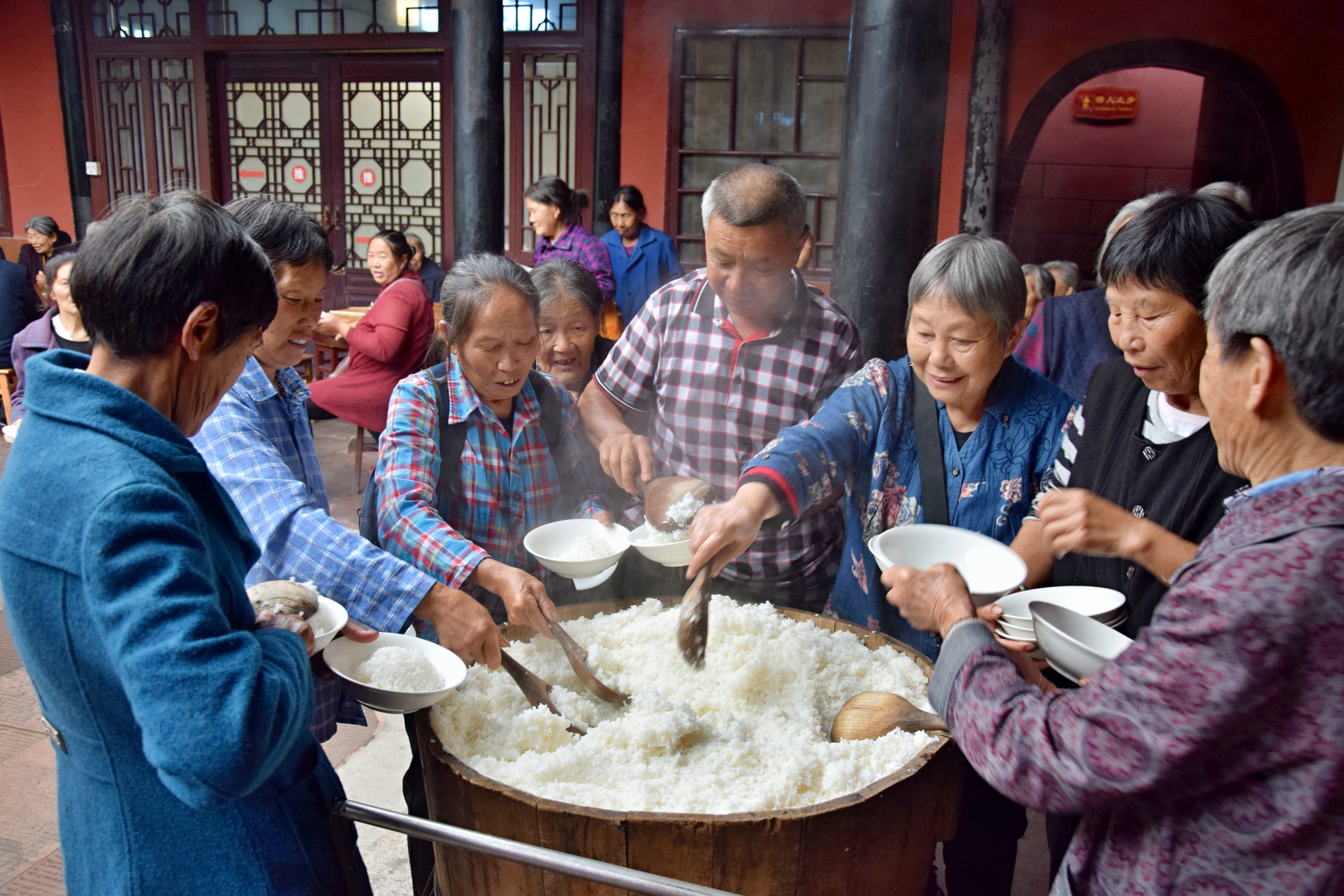
(Diners serve themselves rice at a temple’s vegetarian restaurant in Sichuan. Image: Lao Ma/Shutterstock)
There are many restaurants in mainland China and Taiwan that cater to Buddhists. If there is an active Buddhist temple in your neighborhood, chances are good that there’s a vegetarian restaurant nearby too, or even attached to the temple itself! You might find yourself sharing a table with a Buddhist monk.
Try Street Food
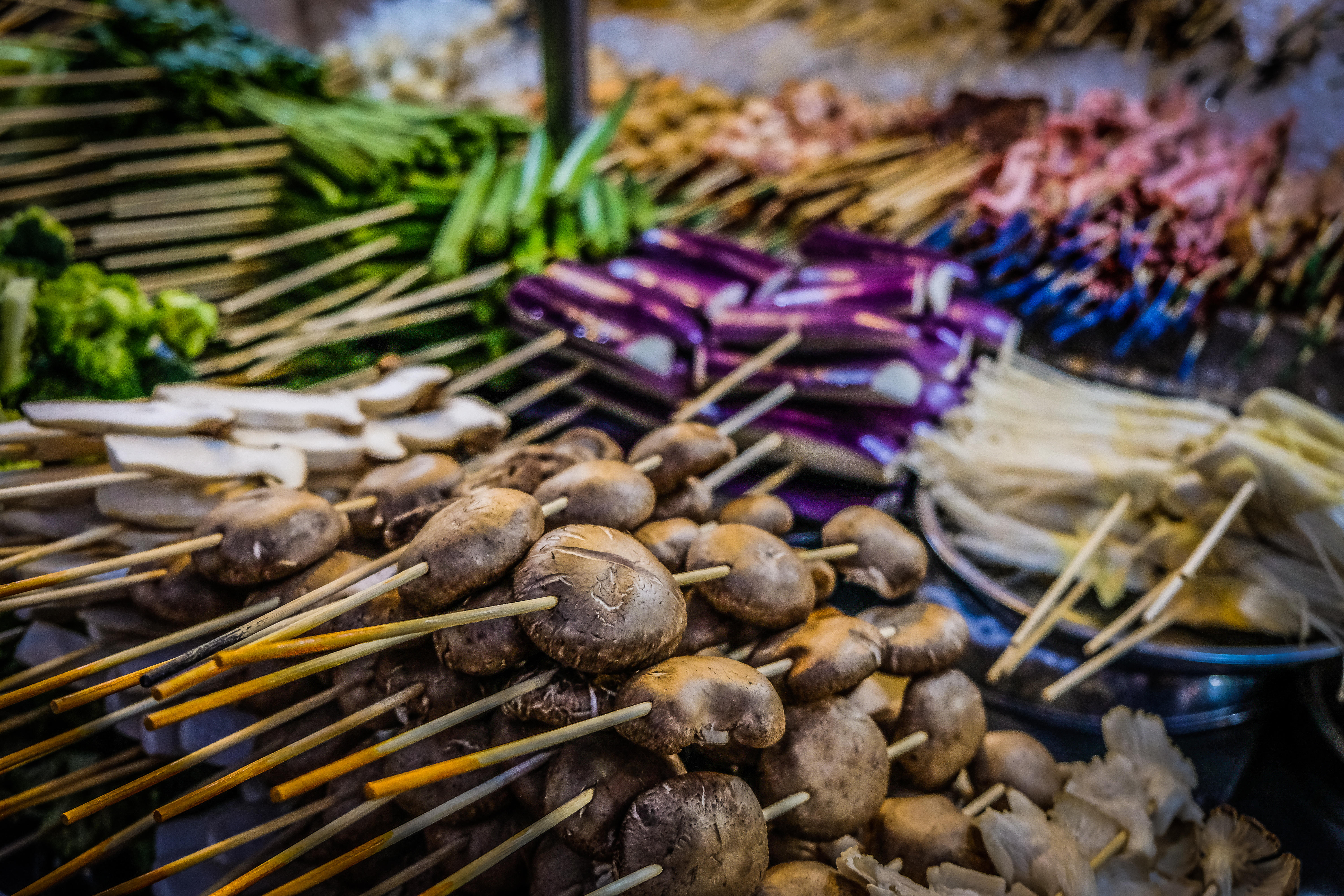
(Vegetable skewers at a barbecue stand in a Chinese street market. Image: Gregory Zamell/Shutterstock.)
Another good bet is to try street food. Since your food is cooked right in front of you, you can make sure the vendor doesn’t accidentally add anything you don’t want. There are tons of mouthwatering options available to vegetarians, like barbecued vegetable kebabs, tea eggs (茶蛋; chá dàn, Chinese egg crepes (煎饼; jiānbing), and stir-fried noodles (炒面; chǎomiàn).
If you’re worried that your food might contain animal fats or broth, though, your best bet is to learn to...
Cook for Yourself
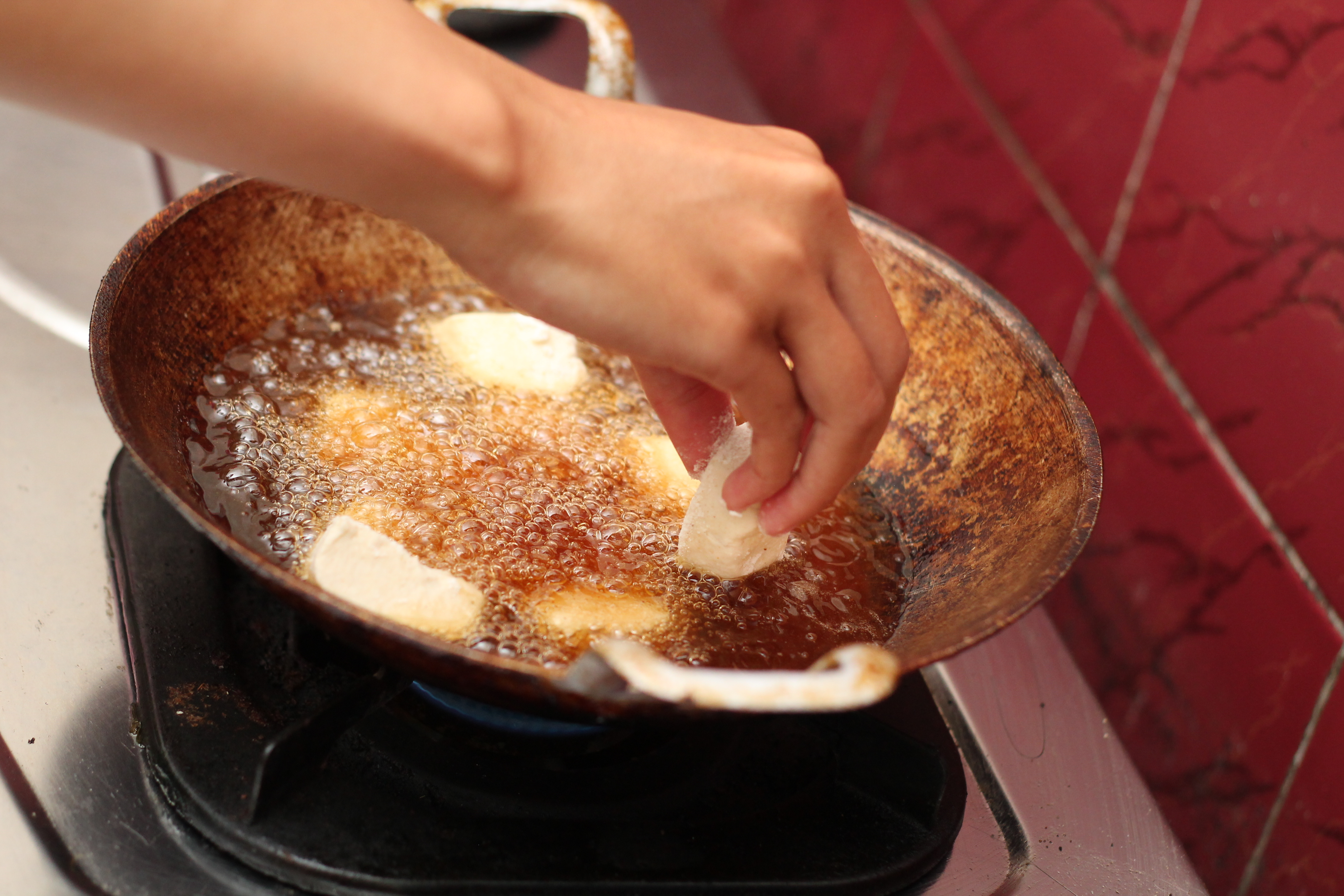
(Frying tofu in the kitchen. Image: fourphotography/Shutterstock.)
In general, Chinese supermarkets and wet markets (local markets selling fresh food and produce) offer an incredibly diverse selection of fruits, vegetables, grains, and herbs. If you have access to a kitchen, consider learning a few recipes for Chinese dishes that you can cook for yourself. There’s no better way to guarantee your food is vegetarian!
To get you started, you can find the recipes for three relatively simple vegetarian dishes below. Click on the videos to watch Chef Wang Gang walk you step-by-step through the cooking process. English subtitles are available for each video if you need them.
Three Bounties of the Earth (地三鲜; dì sān xiān)
The three “bounties of the earth” in this dish are eggplant (茄子; qiézi), potatoes (土豆; tǔdòu), and green peppers (青椒; qīngjiāo), cooked to tender perfection in garlic sauce. Many restaurants offer this dish as 盖饭 (gài fàn), an individual portion served over rice in a bowl or on a plate.
Stir-fried Eggs and Tomato (西红柿炒鸡蛋; xīhóngshì chǎo jīdàn)
Sometimes called 番茄炒鸡蛋 (fānqié chǎo jīdàn) depending upon which part of the country you are in, this simple dish of scrambled eggs and tomato is a delicious and inexpensive option at many restaurants all across China.
Braised Eggplant with Yuxiang (鱼香茄子; yú xiāng qiézi)
Though the name of this dish literally translates to “fish fragrance eggplant,” it doesn’t contain any seafood; 鱼香 refers to a seasoning made from minced pickled chilis, scallions, ginger, and garlic. In some restaurants, this dish is meatless; but in others, there might be a little bit of pork added to give it more flavor. Much of the time, it is very easy for the chef to leave out the pork.
Happy eating!


Comments